Pilates exercises are great for beginners who want to strengthen their core, create long, lean muscles, and add a low-impact workout to their exercise regimen.
Above all, Pilates focuses on teaching you to stabilize and strengthen your core, and this is one of the most important things you can do for your fitness.
Think about it: not only do you need core strength for any athletic activity you do, but everyday activities as well—picking things up, bending over, reaching for things, or carrying something heavy. All of these functional activities require good stability that comes from your middle. And the more stability and strength you have, the less prone to injury you’ll be.
No matter what brings you to your first Pilates exercise, let’s learn how it works and how you’ll benefit in this Pilates Exercises for Beginners. We’ll also show you a quick Pilates workout for beginners at the end of the article to get you started!
Use the links below to quickly navigate this guide:
- What Is Pilates?
- The History of Pilates
- The Mind-Body Benefits of Pilates
- Mat Pilates or Reformer: What’s the Difference?
- Do’s and Don’ts of Your First Pilates Class
- Quick Pilates Workout For Beginners
What Is Pilates?
Pilates is a form of mind-body exercise that uses a series of thoughtful, controlled exercises to strengthen and stabilize your core.
The main goal in Pilates is to teach the muscles of your core to be like the trunk of a big oak tree. While your limbs (branches) are moving around, your middle (trunk) stays strong and anchored.
This is done by using your “powerhouse.” The powerhouse is the combination of muscles that make up your core going from the bottom of the ribs to the top of the hips.
Pilates does teach you to use the entire powerhouse, but specifically zeros in on the very unique muscle called the “transverse abdominous” which sits below your belly button.
If you want to find it, place your hand on your lower abs and cough a few times. The muscle you feel contracting when you cough is your transverse abdominus. This is the muscle that acts like a weight belt around your middle. It not only keeps your belly flat but holds you in tight and keeps your core stable.
Through a series of methodical, simple exercises, you’ll learn how to use your breathing to control this muscle and activate the use of the core in all circumstances. That’s the essence of Pilates.
The History of Pilates
The creator of Pilates as Joseph Pilates, who suffered from many health problems as a child and was determined to become a strong, healthy adult. It has been said that he researched and practiced nearly every kind of exercise he could find and recorded his results. In addition, he may have been one of the first influential figures in fitness to combine the Western and Eastern traditions of health and fitness.
Serving as a nurse during World War 1, Joseph Pilates began to design his technique while helping patients rehabilitate their bodies by using their hospital beds as a tool. He attached springs to the beds and designed exercises to help them get stronger. The Pilates method concentrated on proper breathing and correct spinal and pelvic alignment. When Joseph Pilates came to America in 1923 his technique resonated in the world of dance. Professional dancers discovered that the Pilates method of exercise helped them not only recover from injuries but also prevent recurrence of injuries.
Today, Pilates continues to grow in popularity because these methodical exercises, like the Full Body Roll Up, strengthen your core muscles including your abdominals, back, and hips. Pilates has had ample publicity over the last decade as being the secret to beautiful strong bodies for professional athletes and celebrities, but Pilates is truly for everyone.
Related: Postpartum Pilates Core Workout
The Mind-Body Benefits of Pilates
Because Pilates is so intensely controlled and the movements are so specific, it’s definitely a mind-body exercise. You can likely jump on an elliptical machine next to your friend and carry on a conversation. However, if you are practicing Pilates properly and using the breath the way it is designed, you’ll be completely focused on the exercise. It can be both exhausting and exhilarating.
There are countless benefits you achieve by practicing Pilates:
- Strengthens your core
- Strengthens other muscles without impact
- Prevents injury
- Creates long lean muscles
- Increases flexibility
- Increases mind-body awareness
- Improves posture and alignment
- Reduces stress
The Pilates Method of Body Conditioning is complete coordination of body, mind and spirit.
~Joseph Pilates
Mat Pilates or Reformer: What’s the Difference?
There are two ways to do Pilates: on a mat or on a machine, called a Reformer. Whether you’re on a Pilates reformer pulling cables with your arms or practicing the Pilates 100 on a mat, the goal remains the same: stability during mobility. Wondering which form of Pilates might be for you? Let’s take a look.
Mat Pilates
Mat Pilates is done, obviously, on the mat with your own bodyweight used as resistance. For many, mat Pilates is the preferred way to begin Pilates and learn all the techniques needed to do things properly.
The body of a new student can easily get confused on the reformer while trying to learn the basics of Pilates and also controlling the movement of the equipment. It’s much more advantageous to begin on the mat, learn the basics which are crucial for success, and add the reformer later.
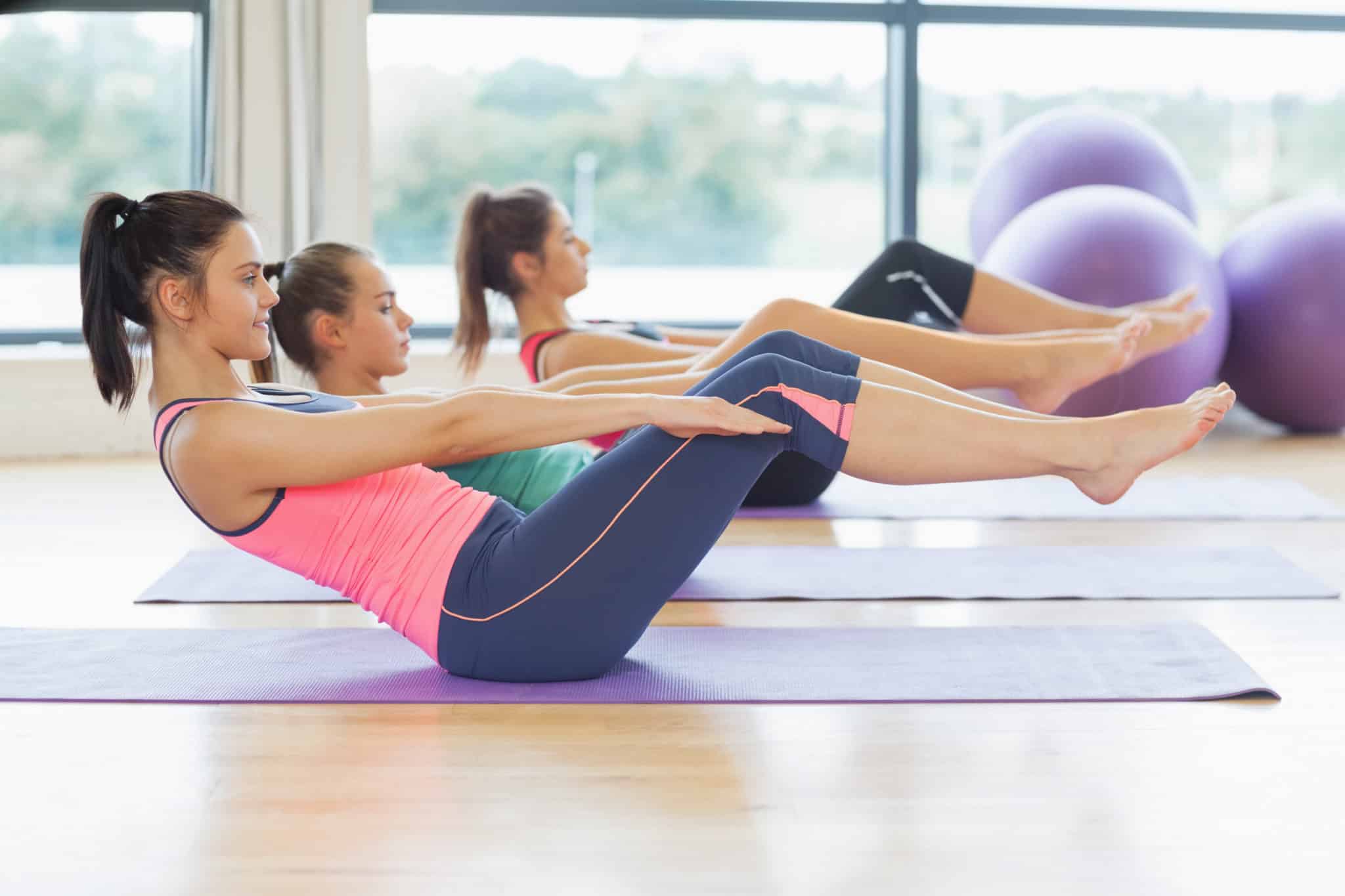
Keep in mind that mat Pilates is not JUST for beginners. Once you learn the tools of the trade there are many ways to make mat Pilates more challenging. The exercises on the mat can get more advanced, depending on how you use your body.
In addition, other tools can be added to the mat work to increase the intensity of the workout such as balls, discs, blocks, straps, and more. The bottom line is this: from beginner to advanced, mat Pilates is for everyone.
Pilates Reformer
Pilates reformers are based on the transformed hospital beds that Joseph Pilates created back in World War 1. Continual updates have been added to the reformer over the years, but the basic structure of the reformer remains the same as the original.
The beds are designed with straps for both the arms and the legs and a surface attached to spring so that it can move back and forth as the participants use their muscles to move it.
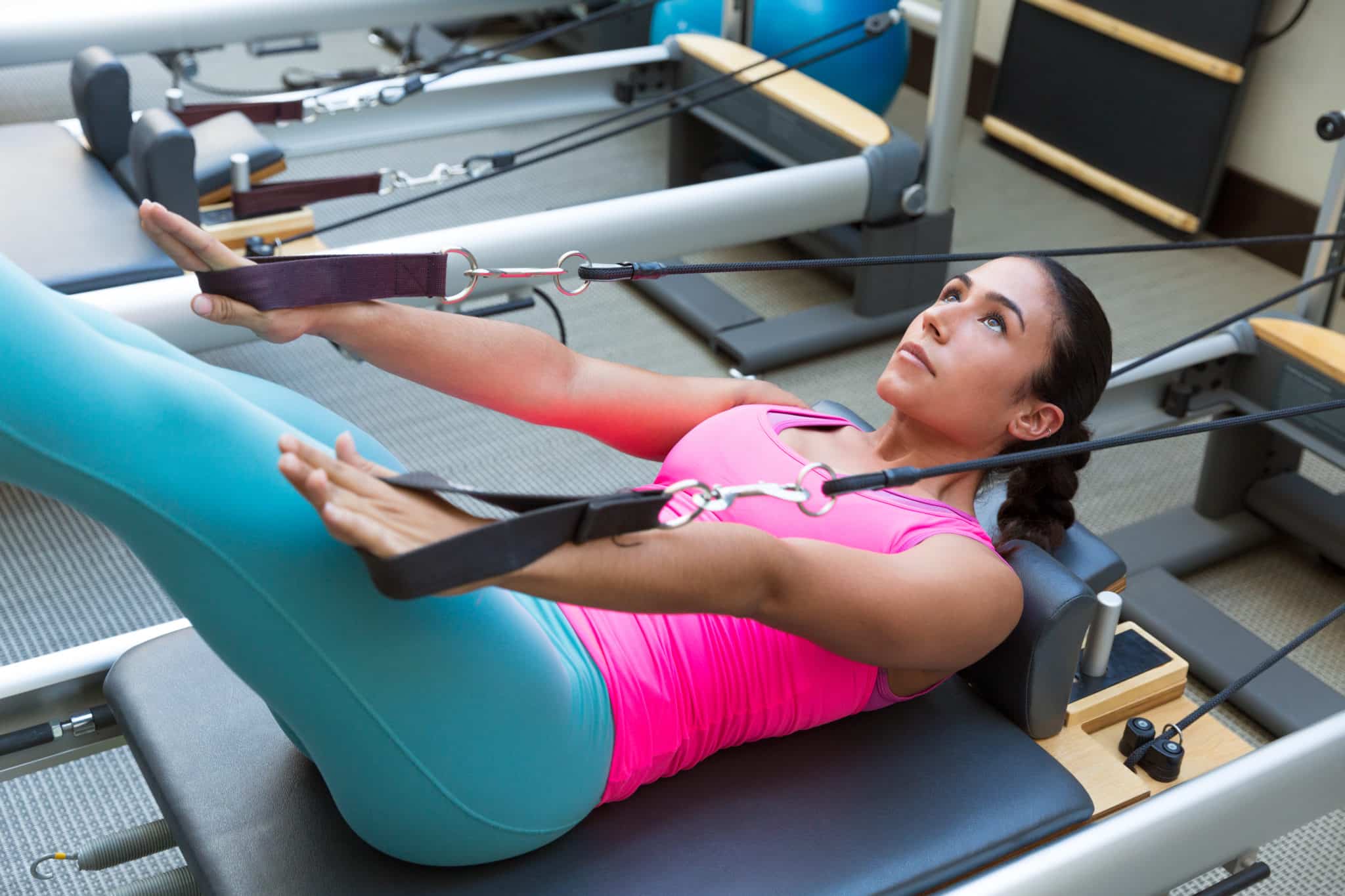
Once you’ve learned the principles of Pilates, taking your workout to the reformer can provide not only new challenges for the core but also a total body strength workout.
One thing to keep in mind is cost. Reformer lessons are going to be significantly more expensive than mat classes so be sure to check ahead for specifics on the cost. There are people who only practice on the mat and others who only practice on the reformer, but keep in mind that the two are not mutually exclusive. Many people practice both and, in truth, that’s a very smart way to go about it.
Pilates Exercises for Beginners-Do’s and Don’ts
It can be intimidating to be new at anything, but everyone starts as a beginner at some point! Here are a few tips to help you navigate your first Pilates class with confidence.
DO find a certified, qualified instructor
Perhaps more than any other type of fitness, Pilates must be taught by someone who is well-trained and certified in Pilates. The learning curve is fairly big and proper technique is everything. Let the instructor know you’re new and they’ll be sure to help you find your way.
DON’T confuse this with a cardio session
The first few Pilates classes you take might not even make you sweat, so don’t plan to leave feeling drenched and physically exhausted. Eventually, you will work your tail off, but the first few sessions will be slow and thoughtful. Just remember details matter. It’s about the quality of movement.
DO pay attention to learning the basics
In Pilates, you must master the basics before you advance to engaging your deeper muscles so no matter how fit or athletic you might already be, humble yourself and learn and be a beginner as you learn.
DON’T wear an oversized t-shirt or sweats
Pilates should be done in fitted or gently fitted clothing. In order for you and your instructor to see if you are doing the moves properly your curves need to be seen. Big t-shirts or sweats will be in the way.
DO consider buying a package
I can’t say it enough- you won’t experience the true benefits of Pilates the first few times. In order to get results you’ll want to do a series of classes. Make sure you buy a package if possible. In all likeliness you will save yourself some money this way.
DON’T go to class on a full stomach
A small snack an hour before your workout is fine. 100-200 calories of something that sits well in your stomach like a banana or toast with peanut butter is perfect. A full meal is not. With all of the intense breathing and pulling in through your core, it’s better that you aren’t carrying a lunch belly.
DO consider bringing your own mat
Call ahead and find out if mats are provided. Sometimes they are, sometimes they are for a cost, and sometimes you have to bring your own. Find out in advance. Don’t forget to bring a small towel for your sweat and a bottle of water.
DO try Pilates at home!
Taking Pilates classes at a studio or gym is great to get started, but once you’ve got your poses down, don’t be afraid to practice Pilates at home, too.
Quick Pilates Exercises for Beginners
Practicing Pilates at home is a great way to get a workout in! Here’s a quick workout you can do right now that takes you through a few of the most basic and popular mat pilates exercises… or try one of our free 10-minute pilates workouts! This workout is best performed without shoes and all you will need is a mat or a soft surface to work on.
Here’s the plan:
- Be mindful of your breathing. For each exercise make sure you inhale and exhale throughout. When you exhale think of blowing hard through a straw, that forced exhale engages your core muscles. So remember to breathe!
- A key in Pilates is quality over quantity. Focus on the precision and quality of each move, rather than trying to do a high number of reps. The number of reps is listed below each exercise, and you’ll stick between 8-12 reps.
- Once you’ve gone through each exercise once, repeat the sequence 2-3 more times as you become more comfortable with the moves.
“In 10 Sessions you will feel the difference, in 20 sessions you will see the difference, in 30 you will have a whole new body.”
– Joseph Pilates
Half RollBack
- Start seated with knees bent and feet on the mat. Arms are rounded in a circle shape in front of the chest.
- Scoop the abdominals and round back towards the mat slowly until you reach the mid-back. Then, engage your abs even deeper and roll back up to your starting position.
Complete 10 reps
Pilates 100

- Start lying on your back. Bring both knees into the chest to form a tabletop position. Bring your head, neck, and shoulder off the mat. Arms are long at the sides. Extend legs long and lower as far as possible while keeping the abs engaged and back connected to the mat in a slight imprint. You can modify by bending knees or bringing feet to the mat with bent knees.
- Pump the arms up and down in a quick, controlled manner while taking five short breaths in and five short breaths out (like sniffing in and puffing out). Be sure to keep your shoulders and neck relaxed and focus on your abdominal muscles doing all the work.
Perform to the count of 100 breaths total
Full Body Roll-Up
- Start lying on the mat with arms extended overhead, legs long, and feet flexed.
- Lift arms up and over shoulders and slowly curl upper body and torso off the floor, coming into a seated position. Fold torso over keeping abs engaged and reaching for toes.
- Pause and slowly roll back down into start, keeping heels on the ground and abs engaged.
Complete 8 reps
Swimming

- Lie on your stomach with your legs and arms extended. Engage your abdominals so you feel your transverse abdominis contract.
- Lift your arms and legs off the floor and keep your nose in a hover above the mat. Flutter your arms and legs, moving from the hips and shoulders (not the knees and elbows). Like your swimming. While swimming takes five short breaths in and five short breaths out (like sniffing in and puffing out).
Perform to the count of 50 breaths total
Bicycle
- Start lying on the back with feet off the floor and legs in a tabletop position. Hands are behind the head and the head, neck, and shoulders are flexed off the mat.
- Bring one knee in and the opposite elbow overreaching towards it. Repeat on the other side in a crisscross motion working the obliques.
Complete 8 reps per side
Bird Dog
- Kneel on the mat on all fours. Reach one arm long, draw in the abdominals, and extend the opposite leg long behind you.
- Repeat on the other side.
Complete 8 reps per side
Want more? Check out our Free 10-Minute Pilates for Abs Workout!
[adthrive-in-post-video-player video-id=”4KFxqppm” upload-date=”2022-02-07T20:46:59.000Z” name=”10-Minute Pilates Workout For Toned Abs.mp4″ description=”This Power Pilates workout is all about strengthening the core, tightening the tummy, and keeping your back healthy-all from the comfort of home!” player-type=”static”]
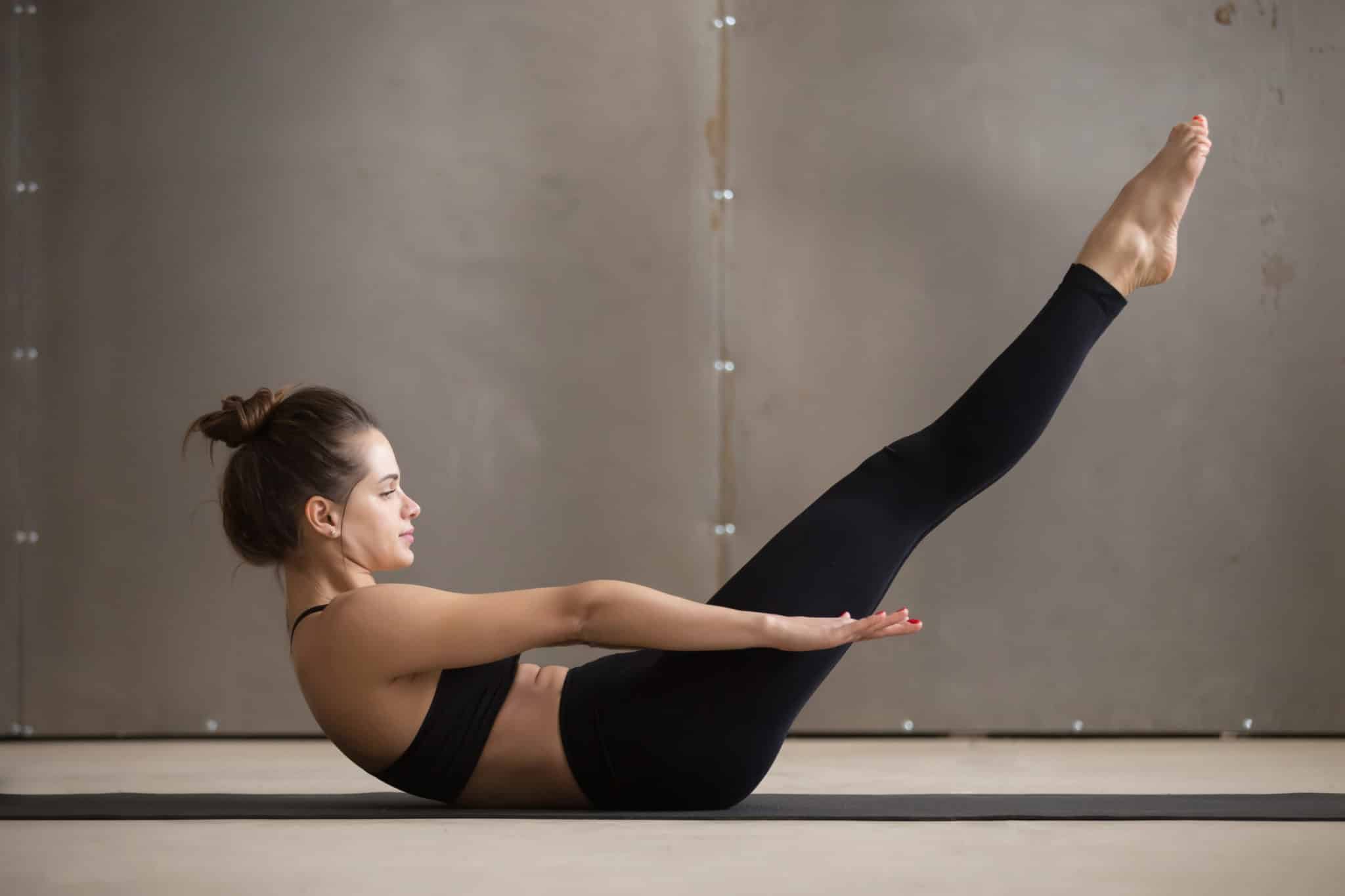

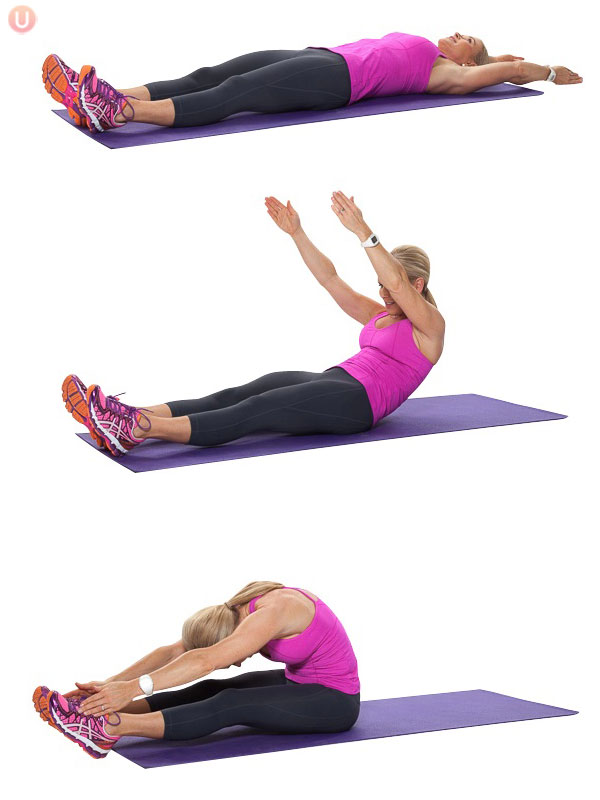

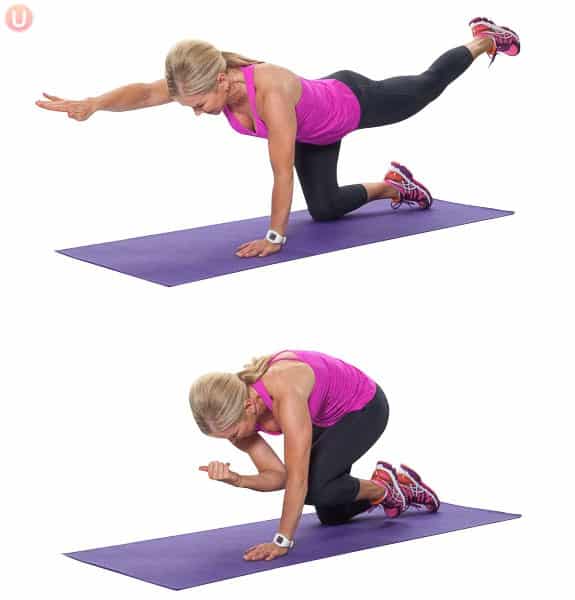
3 Comments
Danielle Kenworthy on May 30, 2016 at 7:07 AM
Chris...you ROCK! Loved you at Florida Mania 2016 as always!!
Madeleine van Rossum on May 29, 2015 at 5:10 PM
Nice. But for beginners i would do the hundred with knee's bended.
Chris Freytag on August 28, 2017 at 3:10 PM
Yup! That is stated in the description of the exercise, Madeleine. We think alike.